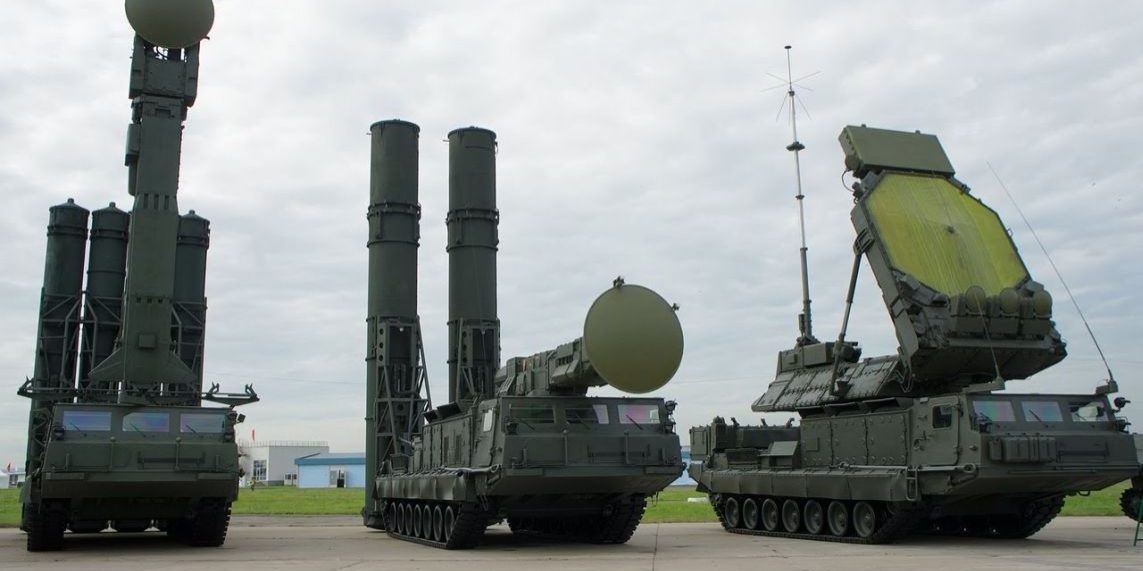Facts
| Russian/NATO Designation | SA-12[i] |
| Variants |
SA-12A Gladiator (S-300V with 9M82) SA-12B Giant (S-300V with 9M83) SA-23 Gladiator/Giant (S-300VM / Antey-2500)[ii] |
| Mobility and Role | Ground-based/road-mobile; multiple-target, universally integrated surface-to-air missile[iii] |
| Designer/Producer | Almaz-Antey[iv] |
| Missiles and Range | 9M83 (75 km); 9M82 (100 km)[v]; Antey-2500 (ballistic missile targets – 250 km, aircraft targets 200 km)[vi] |
| Sensors | Phased-array sector-scan radar |
| Targets | Cruise missiles, low-flying aircraft, short-range ballistic missiles[vii] |
| Status/Exports | Operational/ Exported to Belarus, Egypt, Iran, and Venezuela.[viii] |
Overview
The S-300V has two different versions distinguished by the missile it uses: The SA-12A Gladiator is used primarily for targeting aircraft, whereas the SA-12B Giant is primarily for countering tactical ballistic and cruise missiles.[ix] The Gladiator has a range of 75 km and a max altitude of 25 km, and the Giant has a range of 100 km and an altitude ceiling between 30 and 40 km.[x] The S-300V system uses a phased-array sector-scan radar with a range of 175 km and can track up to 16 targets simultaneously.[xi] A modified version of the S-300V system was revealed in 1998, called the S-300VM, or “Antey-2500.” The Antey-2500 variant has a range of 200 km, a max altitude of 30 km, and can engage 24 targets simultaneously.[xii] The Antey-2500 can target ballistic missiles with a range of 2,500 km, making it one of the more advanced Russian systems.[xiii]
Strategic Implications
The S-300V builds upon the S-300P system, with the addition of ballistic missile defense capability. S-300Vs are currently deployed in Russia’s Kaliningrad enclave alongside the S-400 system. This deployment poses a broad existential threat to aircraft in NATO airspace by allowing Russia to extend its A2/AD zone “across much of Central Europe.”[xiv] Moreover, an S-300V was deployed at Russia’s naval base in Tartus, Syria, as well as Crimea, which undermines NATO’s ability to defend and deter against Russian incursions and influence in Eastern and Central Europe.[xv] Finally, following a re-negotiation of the 2007 Russo-Iranian acquisition contract, additional S-300Vs were sold to Iran, raising the cost of a potential strike on Iranian nuclear facilities and other military assets.[xvi]
Timeline
June 2017: Egypt receives its initial shipment of an S-300VM system.
February 2017: Kaliningrad is outfitted with upgraded S-300VM systems, upsetting NATO.
October 2016: Russia deploys its first S-300V system to Syria.
April 2016: Iran receives its initial shipment of an S-300V system.
2014: The Russian military is outfitted with its first S-300VM systems with improved radar technology.
1996: Russia markets the S-300V system to the UAE in direct competition with the U.S. Patriot system.
1988: The first S-300V is received by the Soviet army.
1983: Antey achieves initial operational capability (IOC) for the 9M83 missile.
1969: Antey begins conceptual development of the S-300 BMD system.
Resources
[i] http://www.designation-systems.net/non-us/soviet.html#_System_NATO
[ii] http://www.astronautix.com/s/s-300v.html
[iii] Ibid.
[iv] http://www.military-today.com/missiles/s300v.htm
[v] http://www.astronautix.com/s/s-300v.html
[vi] http://www.military-today.com/missiles/antey_2500.htm
[vii] http://missilethreat.com/defense-systems/s-300v-sa-12a-gladiator-sa-12b-giant/
[viii] Ibid.
[ix] https://fas.org/nuke/guide/russia/airdef/s-300v.htm
[x] http://www.ausairpower.net/APA-Giant-Gladiator.html
[xi] http://www.ausairpower.net/APA-Acquisition-GCI.html
[xii] http://www.military-today.com/missiles/antey_2500.htm
[xiii] Ibid.
[xiv] https://missilethreat.csis.org/russia-nato-a2ad-environment/
[xv] http://www.globalsecurity.org/military/world/russia/s-300v.htm
[xvi] http://www.businessinsider.com/why-russian-s-300-sale-to-iran-is-a-big-deal-2015-6

